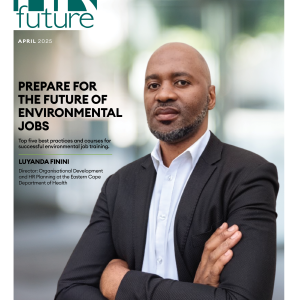The construction industry, a key pillar of economic progress and infrastructure development, is at a crucial turning point. As we witness an unprecedented evolution in technology, paralleled by a robust increase in demand for innovative and diverse construction projects, the industry faces a formidable obstacle: a widening skill gap.
This gap, characterized by the discrepancy between the existing workforce’s skills and the emerging requirements of modern construction practices, poses both challenges and opportunities.
In this article, we delve into the intricate dynamics of these skill gaps, exploring how they impact the construction sector. More importantly, we will examine the various strategies and initiatives businesses and industry professionals can employ to bridge this gap.
By doing so, we aim to shed light on the pathways through which the construction industry can not only adapt but also flourish in this rapidly transforming landscape, ensuring that it continues to meet the demands of the modern world efficiently and innovatively.
Understanding The Skill Gap In The Modern Construction Industry
The construction industry is no stranger to evolution, but the pace of change has accelerated. New technologies, sustainability requirements, and complex projects demand higher expertise.
The gap between the skills workers have and the skills needed is widening. Addressing this gap is not just about finding qualified workers; it’s about fostering a culture of continuous learning and adaptation.
Exploring Types Of Construction Jobs And Emerging Needs
The construction industry is increasingly diverse, encompassing many types of construction jobs and roles beyond traditional job descriptions. While carpenters, electricians, and plumbers remain essential, there’s a growing demand for roles such as sustainability coordinators, BIM (Building Information Modeling) specialists, and renewable energy experts.
These roles are critical in driving innovation and efficiency in construction projects, particularly as the industry shifts towards sustainable and green building practices. Targeted training programs, therefore, must evolve to encompass these emerging roles, focusing on the latest industry standards and environmental regulations. Moreover, as construction projects become more technologically advanced, there’s a rising need for IT specialists, data analysts, and drone operators to support these initiatives.
The Role Of Technology In Bridging The Gap
Technology is a double-edged sword in the construction industry. On the one hand, it has created a skills gap by introducing new tools and methodologies that require specialized knowledge. On the other hand, it offers innovative solutions for training and development. Virtual reality (VR) and augmented reality (AR) are revolutionizing training programs, enabling workers to gain hands-on experience in a safe, controlled environment.
AI and machine learning are optimizing project management and predictive maintenance, reducing errors, and improving project timelines. Adopting these technologies not only enhances the workforce’s skillset but also attracts a younger, tech-savvy generation to the construction industry.
Investing In Education And Training Programs
Investment in education and training is more than a financial commitment; it’s an investment in the construction industry’s future. Comprehensive training programs must blend technical skills, soft skills, and industry-specific knowledge. Apprenticeships and on-the-job training opportunities offer invaluable practical experience. At the same time, online courses and workshops allow for continuous professional development. Partnerships with technology providers can also offer access to the latest tools and training methods, keeping the workforce up-to-date with industry advancements.
Challenges And Barriers To Overcoming The Skill Gap
Addressing the skill gap is not without its challenges. One of the primary barriers is securing sufficient funding for comprehensive training programs. Additionally, there can be resistance to change among existing workers who may be accustomed to traditional methods and technologies.
The time investment required for training and upskilling can also be a deterrent, particularly in an industry where project timelines are crucial. Overcoming these challenges requires financial investment and a cultural shift within organizations, emphasizing the value of continuous learning and adaptation.
Collaboration Between Industry And Academia
The synergy between the construction industry and academic institutions is critical for developing a skilled workforce. Educational institutions can tailor their curriculum to meet the evolving needs of the industry, ensuring that graduates are job-ready.
Internship and apprenticeship programs facilitated through these partnerships provide students hands-on experience, bridging the gap between theoretical knowledge and practical application. This collaboration also enables the sharing of resources and expertise, fostering innovation and research in construction methods and technologies.
The Impact Of Government Policies And Initiatives
Government policies play a pivotal role in shaping the construction industry’s approach to skill development. Initiatives that fund training programs and provide tax incentives for companies investing in workforce development can significantly address the skill gap.
Furthermore, government regulations around building codes and environmental standards drive the need for specialized training and knowledge. Understanding and leveraging these policies can help construction companies stay compliant and competitive.
Adapting To A Changing Workforce
The demographic shift in the construction workforce, with more millennials and Gen Z entering the field, necessitates changing training and management approaches. These younger generations bring different expectations and learning styles to the workplace. They are generally more tech-savvy and value continuous learning opportunities. Adapting training programs to be more interactive, technology-driven, and flexible can help attract and retain younger talent.
Ensuring Quality And Safety Amidst Skill Shortages
Quality and safety are non-negotiable aspects of the construction industry. Skill shortages can pose a risk to these standards, making it crucial to prioritize comprehensive training focused on safety protocols and quality control.
Regular safety drills, workshops on new regulations, and certifications in quality management can help maintain high standards. A well-trained workforce is more efficient and instrumental in upholding the industry’s reputation for safety and reliability.
Leveraging Global Best Practices
The global construction industry offers a wealth of knowledge and experience in addressing skill gaps. Different countries have adopted varied approaches, from Germany’s robust apprenticeship programs to Japan’s emphasis on lean construction techniques.
Analyzing these global practices provides valuable insights into effective training and management strategies. Implementing these best practices can help streamline processes, improve project outcomes, and foster a culture of excellence within the industry.
Conclusion
Addressing the skill gap in the construction industry presents significant challenges and opportunities. By investing in education, embracing technology, and fostering collaboration, the industry can equip its workforce for the future. It’s a journey that requires patience, commitment, and innovation. Still, the rewards are substantial: a skilled, efficient, and adaptable workforce ready to tackle the projects of tomorrow.
Johnathan E. Mitchell is a seasoned construction industry analyst with over 15 years of experience in project management and workforce development. Johnathan, who hails in Texas, has played a pivotal role in several high-profile urban development projects across the United States. His expertise lies in integrating innovative construction technologies with traditional practices to enhance efficiency and sustainability.
Johnathan is a frequent speaker at industry conferences and has published numerous articles on workforce training, project management, and technological advancements in construction. His insights are shaped by his on-the-ground experience and his passion for addressing the evolving challenges in the construction sector. Currently, he serves as a consultant for various construction firms, aiding them in strategic planning and skill development initiatives.







